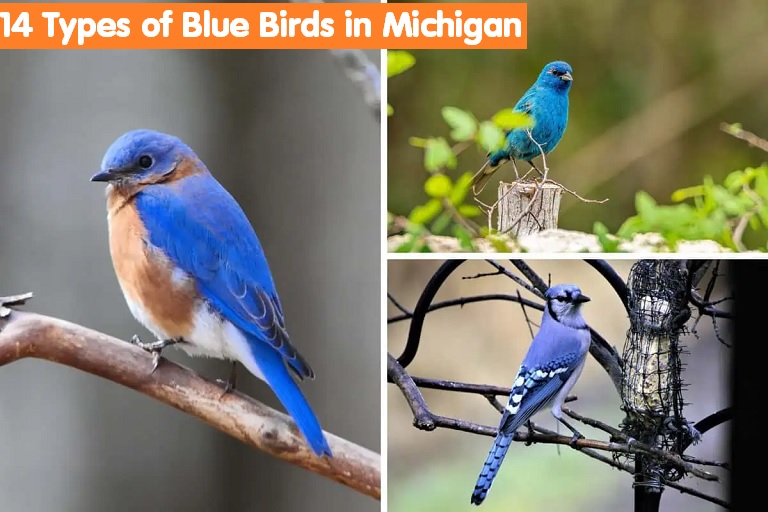Physical Address
304 North Cardinal St.
Dorchester Center, MA 02124
Physical Address
304 North Cardinal St.
Dorchester Center, MA 02124

Michigan is a state blessed with a diverse range of wildlife, and among its most captivating inhabitants are the blue birds that grace our skies. If you’re an avid birdwatcher or just someone who appreciates the beauty of nature, you are in for a treat! In this guide, we’ll explore 14 types of blue birds that you can find in Michigan. So grab your binoculars and let’s embark on this colorful journey!
The Eastern Bluebird is a small thrush with a vibrant blue back and rusty orange chest. They are often found perched on fence posts or in open fields.
Did you know that Eastern Bluebirds have a unique way of communicating? They have a series of melodious whistles that can brighten anyone’s day!
The Blue Jay is easily recognizable with its striking blue color and loud call. They are known for their intelligence and complex social behavior.
Blue Jays are known to mimic the calls of hawks to scare other birds away from their nests. Talk about clever!
The male Indigo Bunting is a brilliant blue, while females are more brownish. They are often found in open woods and fields.
These birds migrate thousands of miles to avoid the cold winters. Imagine traveling that far just for a change of scenery!
Related: 12 Types of Red Birds in Michigan: ID Guide With Photos
The Tree Swallow has a shiny blue-green back and white underparts. They are acrobatic flyers, often seen swooping to catch insects.
Tree Swallows are social creatures that nest in colonies, making it a delightful sight to see them all together!
With its long forked tail and striking blue upperparts, the Barn Swallow is another aerial acrobat. They are often found near water bodies.
Barn Swallows are known for building mud nests under eaves and bridges. It’s a true testament to their hard work!
The Blue Grosbeak is a large bird with deep blue plumage and a stout bill. They are often found in shrubby areas.
These birds have a fondness for seeds and insects, making them a gardener’s friend!
The Lazuli Bunting is a migratory bird that sports a blue head and rusty-orange breast. They prefer open habitats.
Interestingly, the males can vary in color intensity, depending on their diet and age. It adds a bit of mystery to their beauty!
This tiny bird has a bluish-gray body and a distinctive white eye ring. They are often found flitting through trees.
Blue-Gray Gnatcatchers are known for their energetic behavior and constant movement. They’re like little dynamos!
The Purple Martin is a large swallow with a dark blue-purple hue. They are social birds that nest in colonies.
These birds have been known to thrive in human-created habitats, showing how adaptable they can be!
This warbler has a striking blue back with a black throat and white belly. They prefer wooded areas and are often elusive.
Their songs are a pleasure to hear, adding a musical note to the forest ambiance.
The Blue-winged Warbler is a small, bright yellow bird with blue wings. They are often found in shrubby areas.
They prefer habitats that have a mix of shrubs and open spaces, making them a bit challenging to spot!
This warbler is a beautiful shade of blue with a white underbelly. They are often found in mature forests.
Unfortunately, their population is declining, making sightings more special and important for conservation efforts.
The Blue-headed Vireo has a distinctive blue head and is often found in coniferous forests.
Their call is a beautiful series of notes that can be heard throughout the forest. It’s like nature’s own music!
While not entirely blue, the Common Grackle exhibits a blue sheen in its feathers, especially in sunlight.
These birds are often seen in large flocks, making them a common sight in urban areas.
Michigan is home to a variety of blue birds that add color and life to our environment. Whether you’re a seasoned birdwatcher or just someone who enjoys the beauty of nature, keep your eyes peeled for these stunning species. Happy birdwatching!